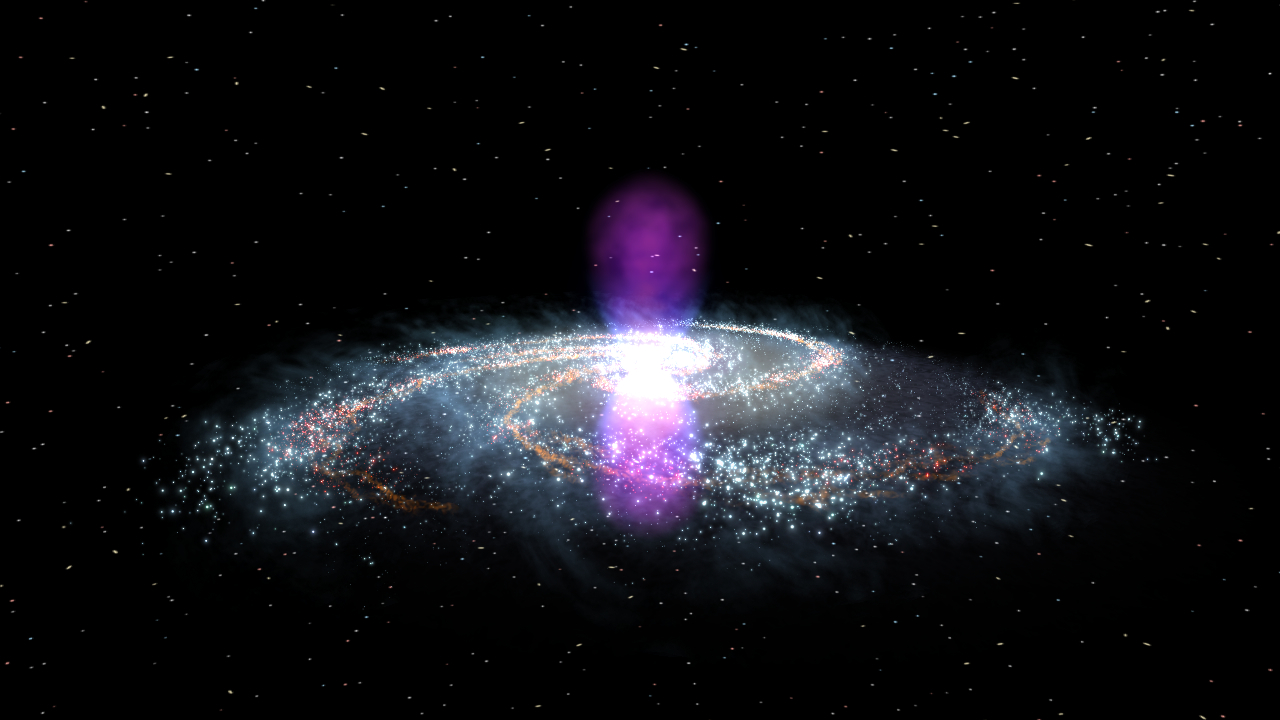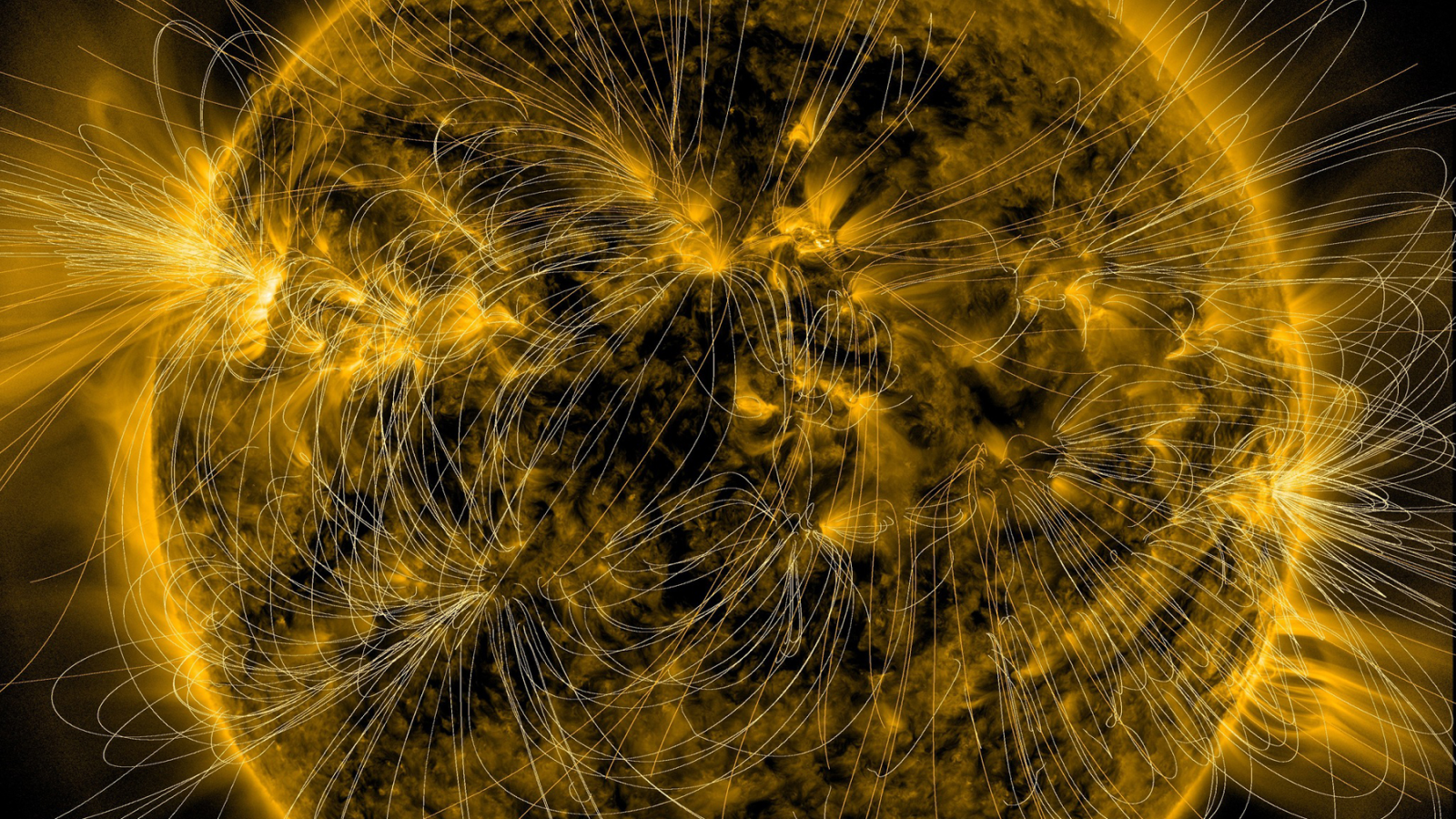Astronomers discover enormous 'barrier' separating the center of the Milky Way from the cosmic ray sea
Something is keeping the universe's fastest-moving particles from entering the center of our galaxy.

The center of the Milky Way may be even more bizarre than astronomers thought, according to a new study.
For the study, a team of researchers from the Chinese Academy of Sciences in Nanjing investigated a map of radioactive gamma-rays — the highest-energy form of light in the universe, which can arise when extremely high-speed particles called cosmic rays crash into ordinary matter — blasting in and around the center of our galaxy.
The map revealed that something near the center of the galaxy appears to be accelerating particles to mind-blowing speeds — very near the speed of light — and creating an abundance of cosmic rays and gamma-rays just outside the galactic center. However, even as the galactic center blows a constant storm of high-energy radiation into space, something near the Milky Way's core prevents a large portion of cosmic rays from other parts of the universe from entering, the team reported Nov. 9 in the journal Nature Communications.
The researchers described the effect as an invisible "barrier" that is wrapped around the galactic center and is keeping the density of cosmic rays there significantly lower than the baseline level seen throughout the rest of our galaxy. In other words: Cosmic rays can get out of the galactic center, but have a hard time getting in.
How this cosmic barrier works, or why it exists, remains a mystery.
Monster in the middle
The center of our galaxy is located about 26,000 light-years from Earth in the constellation Sagittarius. It is a dense and dusty place, holding more than 1 million times as many stars per light-year as the entire solar system — all wrapped around a supermassive black hole with about 4 million times the mass of the sun.
Scientists have long suspected that this black hole, named Sagittarius A*, or perhaps some other object at the galactic center, is accelerating protons and electrons to near light speed, creating cosmic rays that beam throughout our galaxy and onward into intergalactic space. These rays propagate through the magnetic fields of our galaxy, creating an ocean of high-energy particles that's roughly uniform in density throughout the entire Milky Way. This steady soup of particles is called the cosmic ray sea.
Get the world’s most fascinating discoveries delivered straight to your inbox.
In their new study, the researchers compared the density of cosmic rays in this sea to the density of cosmic rays within the galactic center. Cosmic rays cannot be seen directly, but scientists can find them in gamma-ray maps of space, which effectively show where cosmic rays have collided with other types of matter.
Using data from the Fermi Large Area Telescope, the team confirmed that something in the galactic center is indeed acting as a giant particle accelerator, shooting cosmic rays out into the galaxy. Possible culprits include Sagittarius A*, as black holes could theoretically shoot certain particles into space even as they gobble up everything else around them, Live Science previously reported; the remnants of ancient supernovas; or even strong stellar winds from the many stars crammed into the galactic center.
But the map also revealed the mysterious "barrier," a clear point where the density of cosmic rays drops off significantly at the edge of the galactic center. The source of this phenomenon is harder to pinpoint, the researchers said, but it may involve the jumble of magnetic fields near our galaxy's dense core.
For example, dense clouds of dust and gas near the galactic center could collapse onto themselves, compressing the magnetic fields there and creating a cosmic-ray-proof barrier, the team suggested in their paper. Or, perhaps stellar winds from the myriad stars at the galactic center are pushing back against the cosmic ray sea, much as the solar wind does.
Further research is required to figure out exactly what is happening in the bizarre depths of our galaxy.
Originally published on Live Science.

Brandon is the space / physics editor at Live Science. With more than 20 years of editorial experience, his writing has appeared in The Washington Post, Reader's Digest, CBS.com, the Richard Dawkins Foundation website and other outlets. He holds a bachelor's degree in creative writing from the University of Arizona, with minors in journalism and media arts. His interests include black holes, asteroids and comets, and the search for extraterrestrial life.


